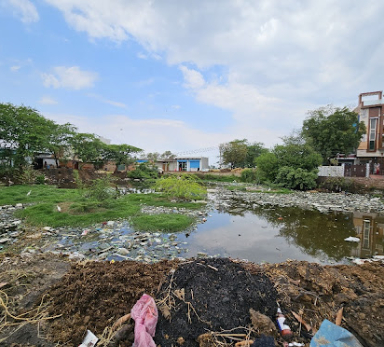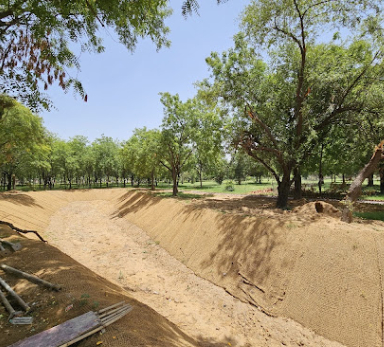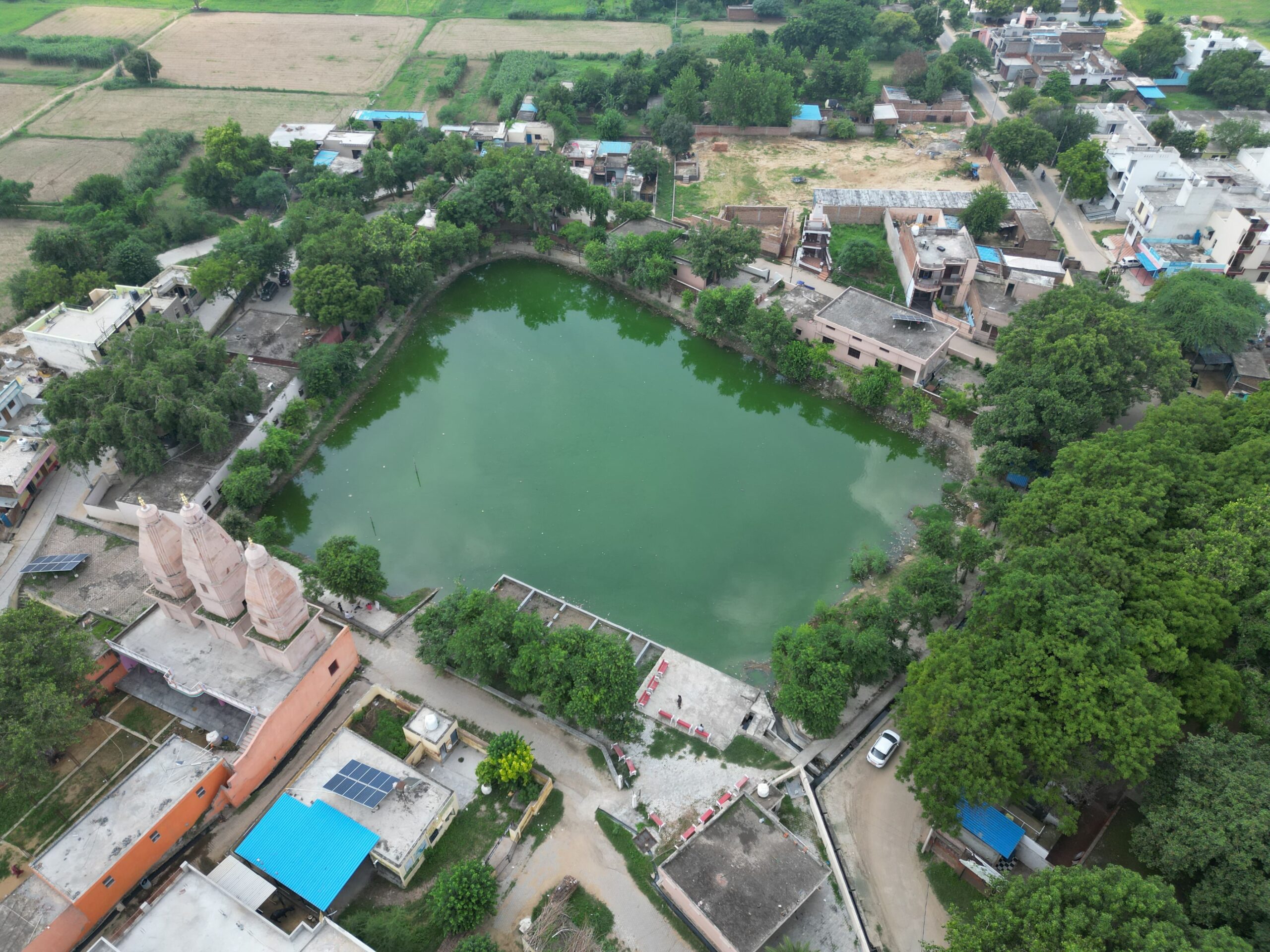
We lose 30,000 ponds every year
Ponds have long been vital for irrigation, drinking water, household needs, and groundwater recharge, serving as lifelines for countless communities. However, with only 30% of wastewater in India being treated, untreated effluents often pollute these vital water bodies, making them unfit for use. Coupled with urbanization and encroachment, this has resulted in the loss of over 6.2 million ponds since independence.
At GuruJal, we are addressing this crisis by integrating pond rejuvenation with wastewater treatment. Our mission is to restore these ponds not only as resilient systems for groundwater recharge, but also abundant sources of water for community use.
Understanding the pond ecologically and socially.
- Detailed site survey
- Ecological and Socio-economic survey
- Mapping hydrology, contours, catchment, inflow-outflow points
- Soil and water quality testing
- Community interviews
Designing nature-based, inclusive, and scalable solutions
- Hydrological modeling + data analysis + Landscape Plan
- Designing of WWTP and Landscape
- Desilting and raising of embankments
- Nature Based wastewater treatment
- Embankment & slope development
- Walkway and Pathway development
- Phyto remediation and Bio-remediation
- Real Time monitoring
Building long-term community ownership.
- Formation of local Pond Committee
- Partnering with gram panchayats, SHGs and CSR donors
- Eco-awareness sessions and school campaigns
Physically reviving the pond with environmental integrity
- Cleaning, desilting and removal of waste
- Deepening and contouring the pond bed
- Levelling and stabilization of slopes and protection
- Plantation of native flora and landscaping
- Erection of fencing and educational signage
Ensuring the pond stays healthy and functional year-round.
- Implementation of the maintenance Plan
- Repairing and restoration of pond and landscape
- Water quality and quantity tracking
- Bird, fish, and plant biodiversity observation
- Scheduled inspections by GuruJal team
- Community-led monthly clean-up drives
- Pond guardianship roles for schoolchildren and volunteers
Creating a model of circular, participatory pond restoration.
- Volumetric water benefits
- Evaluation of groundwater recharge
- Ecological impact: return of species, vegetation health
- Social impact: improved water access, community engagement
- Documentation of learnings for scale-up to other water bodies
Understanding the pond ecologically and socially.
- Site survey, mapping and community interviews
- Hydrology, soil & water testing
Nature-based, scalable planning.
- WWTP design, embankment, pathways
- Hydrological modeling, real-time monitoring
Long-term community ownership.
- Pond committee formation
- Partnerships & awareness drives
Physically reviving the pond.
- Cleaning, desilting, slope stabilization
- Plantation and fencing
Keeping the pond healthy and functional.
- Water quality checks, clean-up drives
- Community guardianship
Scaling circular restoration models.
- Water recharge, biodiversity return
- Community benefits documentation
At Gurujal, we are addressing this crisis by integrating pond rejuvenation with wastewater treatment. Our mission is to restore these ponds not only as resilient systems for groundwater recharge, but also abundant sources of water for community use.

Freshwater pond

Wastewater pond

New pond
Reclaiming each pond creates a ripple effect of positive change.
By blending green and blue spaces through the art of placemaking, ponds are transformed into vibrant experience centers that go beyond their traditional roles as water bodies. These revitalized spaces evolve into dynamic community hubs, promoting engagement, ecological mindfulness, enriched biodiversity, and a stronger bond with nature.

An initiative driven by Border Security Forces
Brookfield Pond, nestled within the BSF campus, had long suffered from neglect and pollution. For years, its once-clear waters were choked with waste.
Recognizing the urgent need to restore this vital source, the dedicated officers of the BSF took charge, leading a dedicated effort to rejuvenate the pond.
By combining community action, wastewater treatment, and sustainable practices, we together transformed Brookfield Pond into a thriving ecosystem.
The initiative not only restored the pond’s health but also strengthened the bond between the BSF and the surrounding community.

